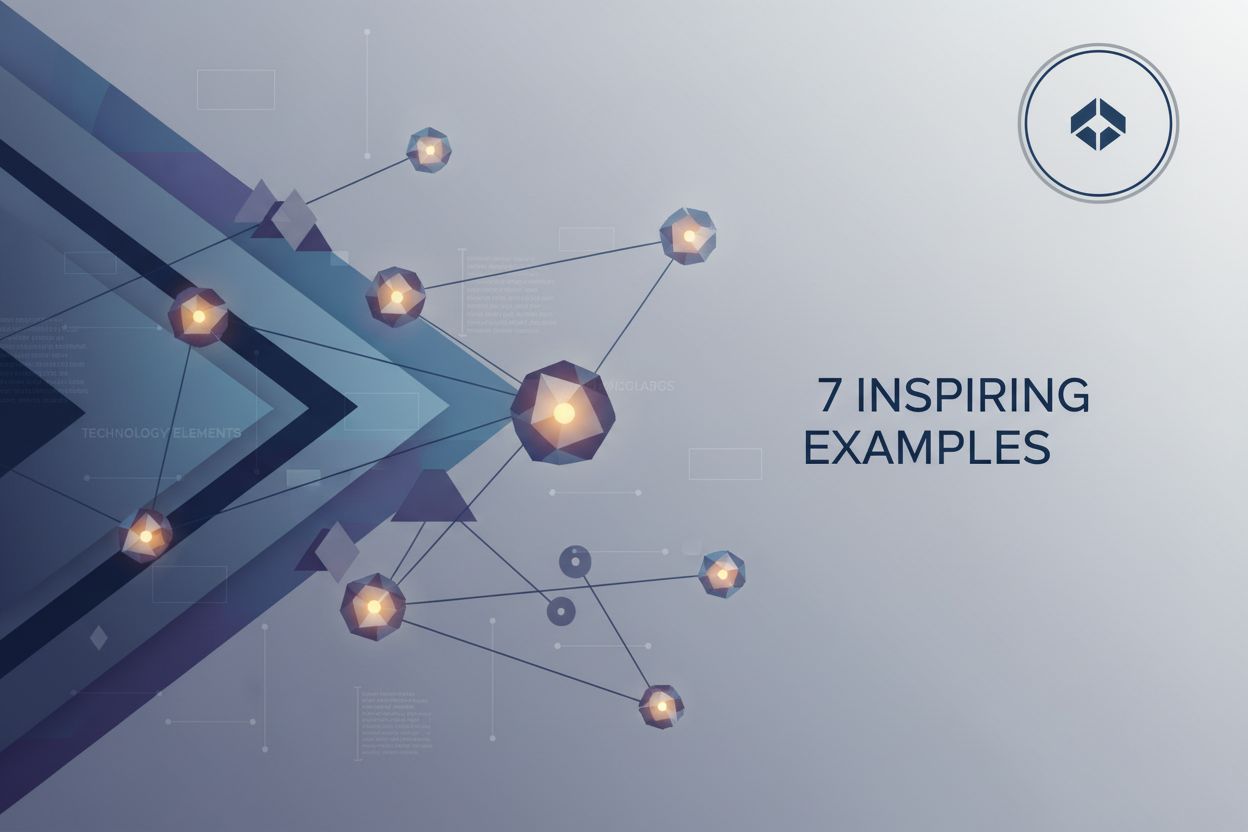The Impact of Web3 on Digital Ownership and Monetization Models
TL;DR
Understanding the Web3 Revolution
Okay, let's dive into this Web3 thing. It's not just some buzzword; it's kinda like the internet's trying to grow up, you know?
So, what is Web3? Simply put, it's the next evolution of the internet. The big promise? Decentralization. Instead of everything living on servers controlled by a handful of mega-corporations, the idea is to distribute the power. Think of it as moving from a few big landlords to a bunch of smaller, independent owners. Which sounds way better, right?
Decentralization is key. (1.1 Why Decentralization?) It's about shifting control from centralized entities – your Googles, your Facebooks – to users. This means more privacy, less censorship, and greater data ownership. Imagine a world where you actually own your social media content, and not some giant corporation. It's a pretty big deal.
Blockchain is the backbone. (Blockchain: The Backbone Of Digital Supply Chains) Blockchain tech is the tech that makes it all possible. It's like a digital ledger that's distributed across many computers. When a transaction happens, it's recorded on this ledger, and everyone has a copy. This makes it super secure and transparent. Think of it as a shared Google Sheet that everyone can see, but no one can secretly edit.
Web1, Web2, Web3: The Evolution. Web1 was the early internet – mostly static pages. (Web Evolution: Journey from Web 1.0 to Web 3.0 - ENTECH Online) Web2 brought us social media and interactive content, but also centralized control, and data harvesting. Web3 aims to fix that by giving users more ownership and control. It's like going from reading a book (Web1) to interacting on a social platform (Web2) to owning a piece of that platform (Web3).
Web3 isn't just about ideas, though. there's some core Tech driving this evolution.
Blockchain: This is the foundational technology, as mentioned. It provides the secure, transparent, and decentralized infrastructure for Web3 applications.
Cryptocurrencies: These are digital or virtual currencies secured by cryptography. Think Bitcoin or Ethereum. They enable peer-to-peer transactions without needing a bank. It's like digital cash, but it's way more complicated than that, honestly.
nfts (non-fungible tokens): These are unique digital assets that represent ownership of items like art, music, or virtual real estate. They're like digital collectibles, but they can also have real-world utility. imagine owning the original digital version of your favorite song as an nft.
Decentralized Autonomous Organizations (DAOs): These are community-led entities with rules encoded on a blockchain. They allow people to collectively make decisions and manage resources. It's like a digital co-op, where everyone has a say in how things are run.
Here's a simple diagram to illustrate how these technologies work together:
So, how does all this affect brands and content creators? Well, it's a game changer.
Shifting power dynamics: Web3 shifts power away from centralized platforms and gives it back to creators and users. This means creators can connect directly with their audiences without needing intermediaries. It's like cutting out the middleman and getting closer to your fans. Which is always a good thing!
New opportunities for direct engagement: Brands can leverage Web3 technologies to create new and engaging experiences for their customers. Think loyalty programs powered by nfts or decentralized communities where fans can directly influence the brand.
The rise of the creator economy: Web3 empowers creators to monetize their work in new ways, such as selling nfts or earning cryptocurrency through decentralized platforms. This is leading to a more diverse and vibrant creator economy.
Web3 is poised to reshape the internet as we know it. But there's still a long way to go. Next up, we'll look at some specific examples of how Web3 is being used in different industries.
Transforming Digital Ownership with Web3
So, you ever think about how much "stuff" you actually own online? Like, really own? Probably not as much as you think. Web3 is trying to change that.
See, right now, most of our digital lives are basically rented. You upload photos to Instagram, write tweets, create videos for YouTube. But you don't own any of that. The platform does. They control it, they can delete it, they can change the rules whenever they feel like it. It's kinda like living in an apartment – you can decorate, but you don't own the building.
Problems with current digital ownership models: The big issue here is control. Centralized platforms have all the power. They can censor content, change algorithms, and even shut down accounts without much recourse. Plus, they profit from your data and content without really sharing the wealth, do they? It's a pretty one-sided deal, honestly.
How nfts enable true ownership: nfts (non-fungible tokens) are like digital deeds of ownership. When you buy an nft, you actually own that digital asset. It's recorded on the blockchain, so it's verifiable and can't be easily copied or faked. Think of it as owning the original digital Mona Lisa, not just a copy.
Examples of digital assets that can be tokenized: Anything digital can be tokenized – art, music, videos, virtual real estate, even in-game items. Imagine owning a unique sword in a video game that you can then sell or trade on a marketplace. The possibilities are pretty wild.
"Web3 represents a shift from a read/write web to a read/write/own web." – Some smart person, probably
Okay, so what does this mean for brands? Well, nfts aren't just for art collectors and crypto bros. They can be a powerful tool for building brand loyalty and creating unique customer experiences.
Use cases for nfts in branding: Brands can use nfts to create exclusive digital merchandise, reward loyal customers, or even grant access to special events. Think of it as a digital VIP pass that unlocks exclusive perks.
Creating exclusive digital experiences: Imagine a fashion brand releasing a limited-edition digital outfit that can be worn in a virtual world. Or a musician selling nfts that give fans access to unreleased music or backstage content. These exclusive experiences can really strengthen the bond between a brand and its customers.
Building community through digital collectibles: nfts can also be used to create online communities where owners can connect, share ideas, and even participate in the brand's decision-making process. It's like a digital fan club with real ownership and influence.
And then there's daos (Decentralized Autonomous Organizations). These are like internet-native companies that are run by their members, not by a ceo or a board of directors. Decisions are made collectively through voting on the blockchain.
How daos empower communities: daos give communities a direct say in how things are run. Members can propose changes, vote on proposals, and even control the organization's treasury. It's like a digital democracy for brands and communities.
Examples of successful daos in the digital space: There's daos that manage investment funds, daos that create and distribute content, and even daos that govern entire virtual worlds. The possibilities are endless and, honestly, a little bit mind-blowing.
The future of decentralized governance: daos could potentially revolutionize the way companies are run. Imagine a future where employees and customers have a real say in how a company operates. It's a pretty radical idea, but it could lead to more transparent, equitable, and sustainable businesses.
Web3 is still in its early days, but it has the potential to completely transform how we think about digital ownership. It's all about shifting power back to the users and creators, and that's a pretty exciting prospect. Now, let's get into how this all affects monetization models...
Reinventing Monetization Models in the Web3 Era
Okay, so, remember when you had to rely on iTunes or Spotify to listen to your favorite tunes? Yeah, those days are kinda fading. Web3 is shaking things up, especially when it comes to how creators actually, like, get paid.
Challenges with traditional monetization platforms
Traditional platforms? They take a huge cut. Content creators often see only a fraction of the revenue generated from their work. Think about YouTube – creators have to navigate complex ad revenue sharing, and even then, their income can fluctuate wildly based on algorithm changes, which is super annoying. Plus, these platforms often have strict content guidelines, which can stifle creativity and lead to censorship, not cool man.
How Web3 enables direct connections with audiences
Web3 lets creators connect directly with their fans, cutting out the middleman... or, well, most of them. Through blockchain technology, creators can offer exclusive content, experiences, and even digital ownership (nfts, anyone?) directly to their audience. This fosters a more intimate relationship and allows creators to retain a much larger share of the revenue. No more begging for scraps from the big platforms!
Building loyalty through tokenized rewards
Tokenized rewards programs are a game-changer. Imagine a musician giving fans who hold their token early access to new music, exclusive merchandise, or even backstage passes. Or a writer who gives token holders the right to vote on future story directions. These kinds of rewards not only incentivize loyalty but also create a sense of community and shared ownership. It's like turning your fan base into a digital tribe, which is pretty rad.
Think of a musician who releases their album as an nft. Fans who buy the nft aren't just getting the music; they're getting a piece of the artist's brand. Maybe it unlocks access to a private discord server where they can chat with the musician, or maybe it gives them a discount on future merch drops.
Ever feel like you're paying for a whole subscription just to read one article? Web3 could fix that.
Monetizing individual pieces of content
Web3 enables micro-transactions, allowing creators to monetize individual pieces of content, like a single blog post, a song, or even a meme. Instead of relying on subscriptions or ads, users can pay a small fee to access specific content, and the creator gets paid directly. It's like paying for what you actually consume, instead of getting stuck with a buffet you didn't want.
Creating sustainable revenue streams
This micro-transaction model creates more sustainable revenue streams for creators, especially those who produce niche or specialized content. Instead of relying on the whims of algorithms or advertisers, they can build a loyal following of users who are willing to pay for quality content. This can lead to a more stable and predictable income, which is every creator's dream, honestly.
Examples of tokenized content platforms
There are already platforms experimenting with tokenized content. Think of a platform where journalists can publish articles as nfts, and readers can buy individual articles using cryptocurrency. Or a platform where photographers can sell their photos as nfts, and buyers can use those photos in their own projects. The possibilities are endless, and it's only a matter of time before these platforms become more mainstream.
Gaming is huge, and Web3 is about to make it even bigger, and weirder.
How P2E is changing the gaming industry
P2E games reward players with cryptocurrency or nfts for their time and effort. Instead of just playing for fun, players can earn real money by completing quests, battling other players, or even just exploring the game world. This is turning gaming into a legitimate source of income for some people, especially in developing countries.
Examples of successful P2E games
Games like Axie Infinity have already shown the potential of P2E. Players can earn axie tokens by battling other players and completing quests, and then trade those tokens for real money. Some players are even earning a living wage by playing Axie Infinity, which is wild.
The potential for brands to integrate into P2E ecosystems
Brands can integrate into P2E ecosystems by creating in-game items, sponsoring events, or even creating their own P2E games. Imagine a fashion brand creating digital clothing that players can wear in a virtual world, or a food brand sponsoring a virtual cooking competition. These kinds of integrations can reach new audiences and create unique brand experiences.
Web3 is still a bit of a wild west, but it's clear that it has the potential to completely transform how content is created and monetized. From cutting out the middleman to creating new revenue streams, Web3 is empowering creators and giving them more control over their work. Now, let's talk about how GetDigitize can help you navigate this crazy new world...
Strategic Implications for Brands and Businesses
Okay, so, you've made it this far – congrats! But implementing Web3 isn't just about slapping some nfts on your existing strategy; it's a whole mindset shift.
Understanding your audience's needs: This sounds obvious, right? But in Web3, it's extra important. Are your customers even interested in crypto or nfts? What problems are they facing that Web3 solutions can solve? Don't just jump on the bandwagon because it's trendy. Do your research, talk to your customers, and figure out if Web3 actually aligns with their needs and desires. For example, a luxury brand might create exclusive nfts that grant access to VIP events, while a healthcare provider could use blockchain to securely store and share medical records.
Choosing the right blockchain platform: There's a ton of blockchains out there – Ethereum, Solana, Cardano, and, like, a million others. Each one has its own strengths and weaknesses. Some are faster, some are cheaper, and some are more secure. Consider what's important for your specific use case. If you're dealing with high-value transactions, security might be your top priority. If you're building a game with lots of micro-transactions, speed and low fees might be more important. It's a bit like choosing the right engine for a car; you want something that's powerful, reliable, and fits your budget.
Prioritizing security and transparency: Web3 is all about trust, but that trust has to be earned. Make sure your smart contracts are audited by reputable firms. Be transparent about how your systems work and how you're handling user data. The lack of security could really kill the project. It's like building a house on a shaky foundation – it might look good at first, but it's eventually gonna collapse.
Understanding current regulations: The regulatory landscape around Web3 is, uh, evolving, to put it mildly. Governments around the world are still trying to figure out how to deal with crypto, nfts, and daos. It's a bit of a legal gray area. It’s important to keep an eye on what's happening in your jurisdiction and understand how existing laws might apply to your Web3 activities.
Staying compliant with evolving laws: Regulations are changing all the time, so you need to stay informed. Subscribe to industry newsletters, attend conferences, and follow legal experts on social media. Compliance isn't a one-time thing; it's an ongoing process.
Seeking legal counsel: Honestly, this is probably the most important point. Don't try to navigate the regulatory landscape on your own. Hire a lawyer who specializes in Web3 and blockchain technology. They can help you understand your obligations and avoid costly mistakes. It's like having a guide in a jungle – you don't want to get lost or eaten by a tiger.
Predictions for the future of Web3: Okay, nobody has a crystal ball, but here's my take: Web3 is gonna become more integrated into our everyday lives. nfts will be used for more than just digital art; they'll be used for things like ticketing, loyalty programs, and even identity verification. daos will become more common, and we'll see more companies experimenting with decentralized governance. It will take time, but it is coming.
How Web3 will impact different industries: Every industry is going to be affected by Web3, but in different ways. The financial industry will see more decentralized finance (defi) applications. The entertainment industry will see more creators connecting directly with their fans. The supply chain will become more transparent and efficient. Even healthcare could be revolutionized by blockchain technology.
Preparing your business for the decentralized web: So, what should you do to prepare? Start by educating yourself and your team about Web3. Experiment with different technologies. Talk to your customers and find out what they want. And don't be afraid to fail. Web3 is still in its early days, and there's gonna be a lot of trial and error.
Web3 represents a pretty big paradigm shift. It's not just about new technology; it's about a new way of thinking about ownership, community, and value. Even though it's a bit of a wild west right now, the potential is enormous. And while it might sound scary, services like GetDigitize can help you figure how to make web3 work for your business, so you're not alone.






